Australia is an incredibly diverse place, especially when it comes to native flowers. Composed of mountain ranges, sandplains, wetlands, and vast coastlines. Australia provides a rich environment for abundant plant life to thrive. Additionally, Australia ranks third in the world in having the most endemic species of flora.
A number of the country’s plants have gained worldwide attention and renown over the years. In fact, plants such as the Eucalyptus, Banksia, and Wattle, many of the country’s fascinating species are still relatively unknown.
So, let’s dive into a grand collection of Australian native flowers and get to know some of its fascinating species!
The Grand List of Australian Native Flowers:
- Kangaroo Paw
- Heart-leaf Flame Pea
- Waratah
- Royal Bluebell
- Rhododendron lochiae
- Hakea
- Australian Daisy
- Banksia
- Cooktown Orchid
- Fairy Fan Flower
- Flannel Flower
- Billy Buttons
- Grevillea banksii
- Karkalla
- Bottlebrush
- Cranbrook Bells
- Rice Flower
- Pink Heath
- Violet Kunzea
- Sydney Rock Orchid
- Grass Trigger Plant
- Featherflowers
- Coppercups
- Native Violet
- Coastal Jugflower
- Coral Bush
- Sturt’s Desert Pea
- Christmas Bells
- Golden Wattle
Kangaroo Paw
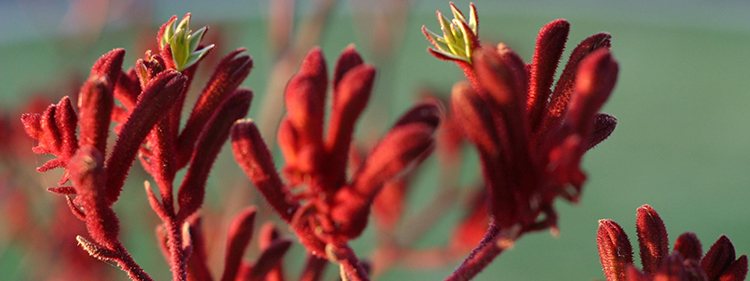
Delightfully quirky and colourful, the Kangaroo Paw is unique to Australia. Found in the southwest of Western Australia where it is, fittingly, the state’s official flower. Its delicate, finger-shaped flowers bloom in the spring and occur naturally in only four colours: red, green, orange, or yellow. In fact, with over 25 cultivated hybrids (in addition to the 11 known natural species) they are available in a wider range of colours. Lastly, quite remarkably, a blue variety.
Heart-leaf Flame Pea (Chorizema cordatum)

You can spot the stunning Heart-leaf Flame Pea from miles away. With its bountiful hot orange and pink flowers that cover almost the entire shrub. Additionally, as its evergreen heart-shaped foliage, it is designed to mesmerise.
This plant is known as Kaly by the Aboriginal people in the southwest of Western Australia. The Heart-leaf Flame Pea blooms mostly during spring. Lastly, It grows up to 1 metre high, making for a lovely hedge or border.
Waratah

With its spectacular and elegant floral display, the Waratah certainly deserves the honour of being the official flower of NSW. There are only five known species of Waratah, all of which are found on the east coast of Australia. The New South Wales Waratah is the most popular and commonly occurring. Scientifically known as Telopea speciosissima, the New South Wales Waratah has large crimson-coloured flowerheads with over 250 individual flowers. Its graceful shape is so striking that it has been featured in multiple aspects of pop culture. From stamps and architecture to art, advertising, and souvenirs.
Royal Bluebell (Wahlenbergia gloriosa)
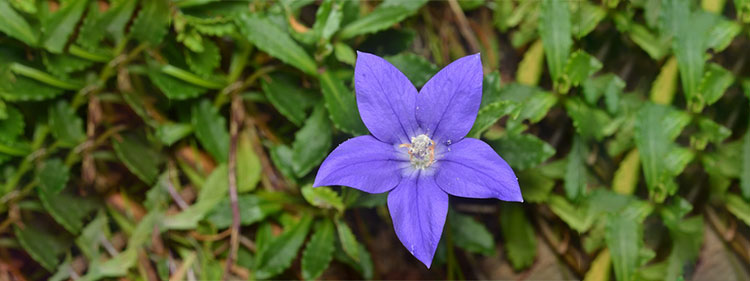
A graceful plant with flowers that are such a deep shade of blue that they almost look purple. The Royal Bluebell enthralled even botanists who classified it, leading them to name it Wahlenbergia gloriosa. In English, the Latin word gloriosa translates to – you guessed it – ‘glorious’. However, its accolades don’t end there. In 1982, the Royal Bluebell was also selected as the official flower emblem of the Australian Capital Territory. Additionally, It blooms from early spring all the way through to the end of summer. In Fact, it produces just one flower on each stem.
Rhododendron lochiae

Found on the mountaintops of northern Queensland, the Rhododendron lochiae is one of only two Rhododendrons native to Australia. Referred to as a tropical rhododendron. It is easily identifiable by its dark red bell-shaped blooms that happily populate its stout, wide frame. In fact, the flowers grow to between 2.5 cm and 5.5 cm long and bloom during the spring months. Additionally, when grown from seedlings, Rhododendron lochiae usually reaches maturity after three years. Lastly, this species was named after Lady Loch who was the wife of the Governor of Victoria in 1884.
Hakea

There are so many astoundingly beautiful species of Hakea that it is very difficult to feature only one. From the captivating Hakea lehmmaniana. Which is one of the few plants in nature that produces blue flowers. To the delicate Hakea Laurina with its pink ball-shaped flowers covered with soft white needles. Including the mesmerising Hakea cucullata, which grows in a multilayered skyscraper formation. Where each red flower balances atop a single leaf, this species is as extraordinarily diverse as it is intriguing. Among all the Australian native flowers, Hakeas can be found in every state and are highly ornamental.
Australian Daisy (Brachyscome)
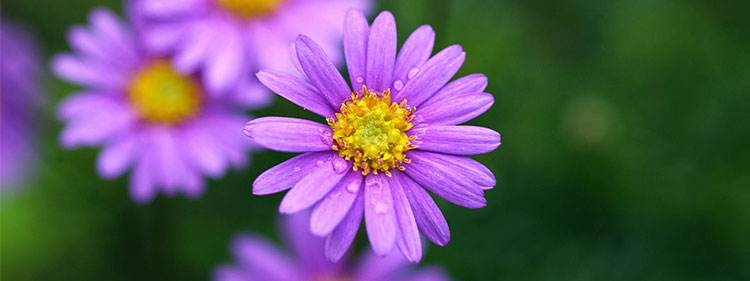
Out of the over 20,000 species of daisies around the world, a little under 1,000 are endemic to Australia. The most easily and commonly cultivated is the Brachyscome species. Which occur mostly on the east coast of the country. However also in habitats as diverse as mountains, coastal areas, and even in arid conditions. They come in a wide range of colours. These run the gamut from white to yellow, pink, all shades of purple. In the case of the Brachyscome iberidifolia, even the rare blue.
Banksia
Found predominantly in Southwestern Australia, Banksias are a unique sight to behold. After a few years of growth, they produce a flower spike that is covered with a bounty of flowers. Numbering in the hundreds and even thousands. This inflorescence is usually either spherical or cylindrical in shape. It is most commonly a shade of yellow, ranging from very pale to dark. Occasionally also occurs in a lovely deep red. They make striking additions to floral arrangements as cut flowers and have a sufficiently long vase life. You might have your very own Banksia bouquet. Choose between the eco-conscious Zero Waste Bouquet, the impressive First Impression arrangement. Alternatively the elegantly minimalistic Naturally Native collection of flowers, among many other gorgeous arrangements – or pick all three!
Cooktown Orchid (Dendrobium bigibbum)

Only four varieties of this truly breathtaking Australian native flowers have so far been found in just four places in the world. Queensland, New Guinea, some Torres Strait Islands, and on Larat Island in Indonesia. It’s uniqueness to Queensland landed it the fitting title of the official flower emblem of Queensland in 1959. Unfortunately, due to habitat loss and over-collection, the Cooktown Orchid is now rare in the wild. But, in the areas in northern Queensland where it can still be found, it blooms for about six weeks during the dry season. When humidity levels are between 40% and 70% and it can grow up to 80 cm.
Fairy Fan Flower (Scaevola aemula)
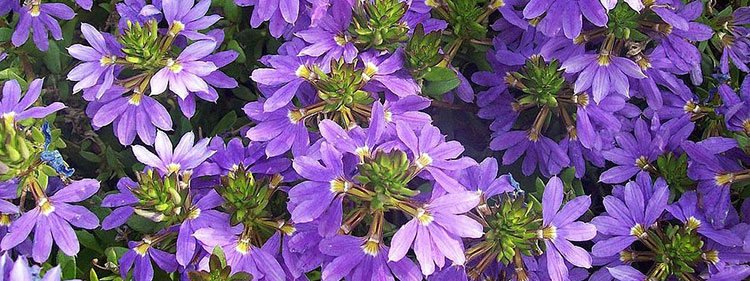
This exquisite native Australian flowers has inspired artists from around the world with its remarkable and distinctive formation of flowers. It almost always produces dazzling purple flowers, each with exactly five petals that are ‘fanned out’ in a semi-circle. It is an exceedingly generous bloomer and seeing a shrub almost entirely covered in flowers is an extraordinary sight. Found in various parts of the country, including Victoria, Western Australia, South Australia, and New South Wales. The Fairy Fan Flower works particularly well as a bedding plant or anywhere where its magnificent blooms are in full display.
Flannel Flower (Actinotus helianthi)

Covered entirely in tiny soft hairs, the Flannel flower gets its name from the texture of its flower. Which feel like flannel fabric when you touch them. With its flared out petals, It is also accurately described by its scientific name, Actinotus helianthi. Which means ‘ray’ or ‘wheel spoke’ in Greek. Found only on the east coast of Australia, the Flannel Flower grows to between 30 cm and 90 cm tall. It produces blooms throughout the year, peaking in late spring and the early summer months.
Billy Buttons (Craspedia)
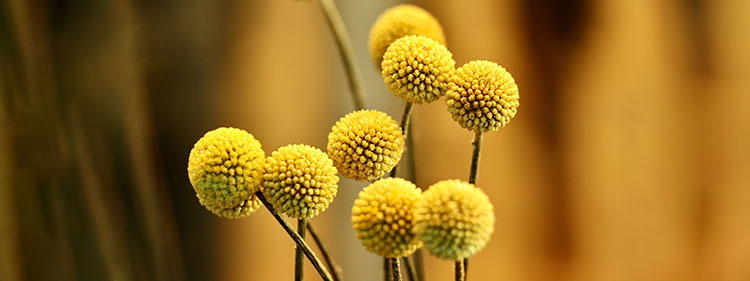
Tiny, but packing lots of joy, these precious Australian native flowers are an absolute delight to the eyes. Globular in shape, at times perfectly so. You would be forgiven for mistaking them for bright, yellow cotton balls or mini golden golf balls from a distance. Billy Buttons are fast growers and will typically germinate within days of planting. They grow between 0.5 metres to 1 metre tall and bloom all year round in warm weather. In cooler areas mostly in the spring and summer months. They occur in all states, apart from Tasmania, and are absolute standouts as both an ornamental and cut flower.
Grevillea banksii
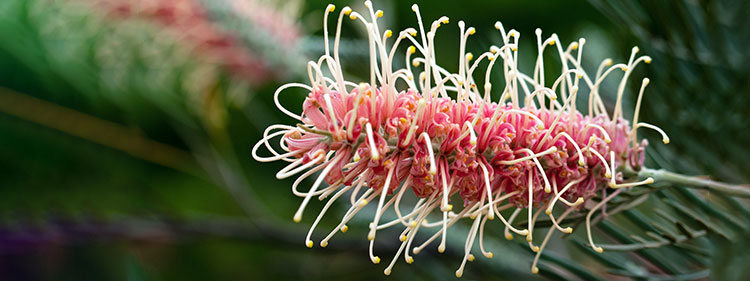
There are more than 350 species of Grevilleas. Ranging from fast-growing ground covers, such as the Grevillea laurifolia. To tall trees, like the Grevillea robusta. Here we are going to focus on the most popular of the Grevilleas: the Grevillea banksii. Loved for its dense and voluminous foliage and its long flowering time. The blooms of the Grevillea banksii often last for about 3 months from August to October. It can grow anywhere between 2 metres and 10metres high. While it commonly produces bright red blooms, it is also known to occasionally bear white flowers.
Karkalla (Carpobrotus rossii)
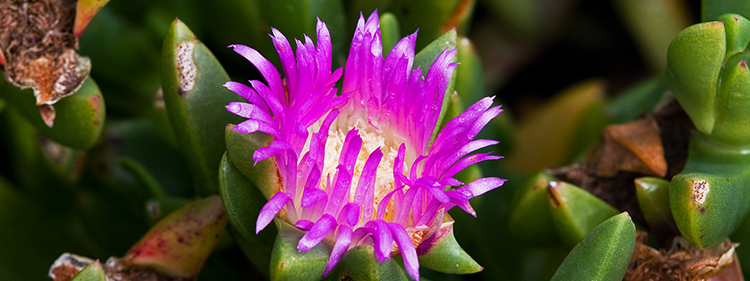
Bringing an exuberance of colour and charm to the beach. The Karkalla is a succulent that is native to all of the coastal areas of southern Australia. As well as on the shores of Tasmania. Its purple flowers are rather large, growing to around 6 cm wide. The plant itself can spread to about 2 metres. While the Australian species of Karkalla is scientifically known as Carpobrotus rossi. It also goes by other names, such as sea fig, beach bananas. It also has another slightly unflattering name of pig face. Which is a result of the fruit that it produces looking like, well, the face of a pig.
Bottlebrush (Callistemon)
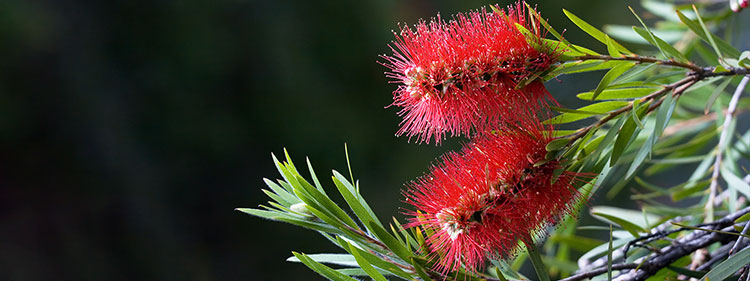
There are times when you look at nature’s creations and are rendered awestruck by its design. The Bottlebrush is definitely one of those designs. An evergreen shrub with cylindrical flower spikes that is purely among the Australian native flowers. They bloom in the summer. These are usually red in colour but there are also green, pink, purple, white, and even magnificent yellow varieties. Bottlebrushes grow anywhere between 1 metre tall to as high as 12 metres, in the form of trees. In addition to their brilliant shape and colour, they also liven up gardens by attracting lovely butterflies and hummingbirds. Send lots of joy to someone today with this incredibly colourful bouquet from Flowers Across Sydney. It contains Bottlebrushes, Orchids, Grevillas, and much more.
Cranbrook Bells (Darwinia meeboldii)
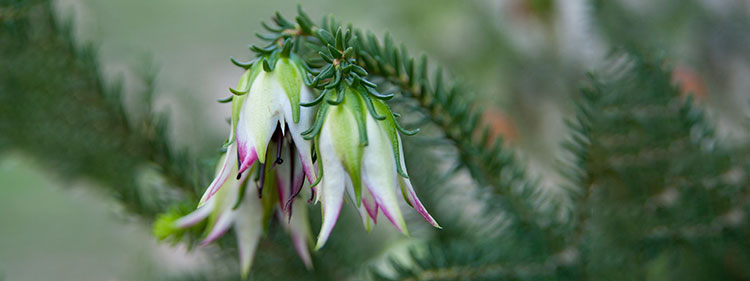
Although they are botanically known as Darwinia, Cranbrook Bells mainly occur in the south of Western Australia. They produce multiple branches covered with vivid green leaves. Each branch bears a single flower that hangs from its end like a bell. Blooming mostly in springtime, they take about four to five years to reach maturity. The flowers are usually white with a red edge at the tip. Cranbrook Bells prefer the rocky hillsides of Stirling Range National Park and are consequently also known as Mountain Bells. They are currently listed as threatened due to habitat changes and weed invasion. However, they are fighters and have the ability to resprout even after forest fires.
Rice Flower (Ozothamnus diosmifolius)
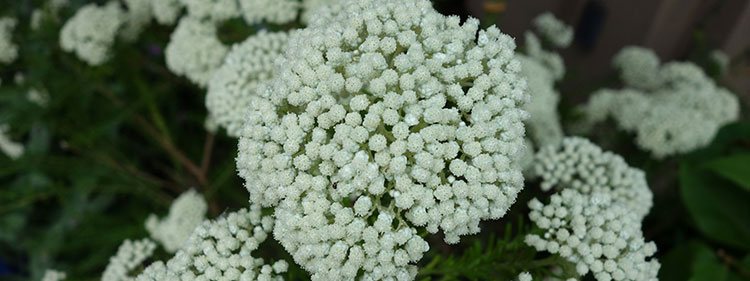
These big-hearted native Australian flowers come practically bouquet-ready, as their tightly packed flowers are arranged in perfect clusters. Native to eastern Australia and some parts of Queensland, Rice Flowers naturally occur in various shades of white or pink. Their leaves emit a distinct spicy scent. Hence its scientific name Ozothamnus diosmifolius with ‘Ozo’ meaning ‘to smell’ and ‘thamnos’ translating to ‘a shrub’. Its other common names include sago bush or white dogwood. We humbly suggest the consideration of an additional one – popcorn shrub – because it’s so very fitting. Rice flowers typically grow to between 1.5 metres and 2.5 metres high and flower in spring.
Pink Heath (Epacris impressa)
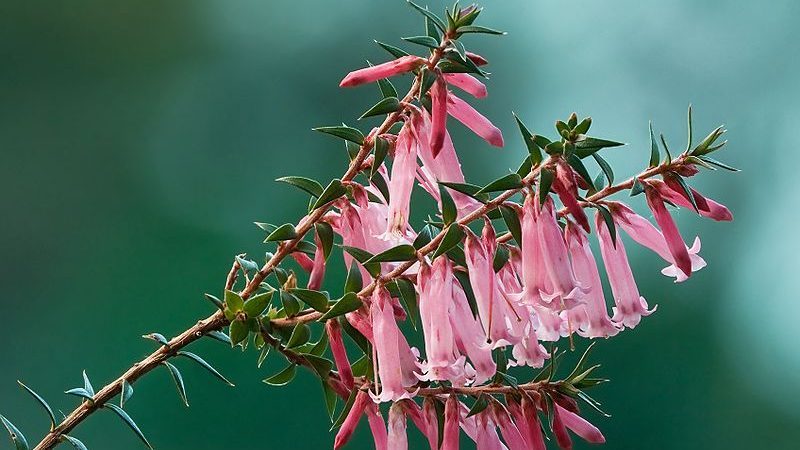
A delicate and adorable plant,. The Pink Heath enjoys the honour of being the official floral emblem of the state of Victoria. In fact, Victoria was a pioneer of sorts in this regard. Because it was the very first state or territory in Australia to officially select a floral emblem. Pink Heaths are among those native Australian flowers that bloom throughout the spring until the winter and they grow to about 1.2 metres tall. Pink Heath can also be found in other states too. Including Tasmania and New South Wales. There is also a white-flowered version that occurs more commonly and in warmer areas of the country.
Violet Kunzea (Kunzea parvifolia)

A quintessentially evergreen shrub, the Violet Kunzea is particularly boisterous in both colour and flowering. Producing dense clusters of round spikey blooms that kind of resemble birthday sparklers. Its flowers commonly range from a vivid pink to an inviting purple. All 40 species of Kunzea are among Australian native flowers. They are primarily found in the woodlands of New South Wales and Victoria. Except for one that also occurs in New Zealand. It’s closely related to the bottlebrush plant. Just as similarly, it grows into a rounded bush, reaching an average height of 1 metre.
Sydney Rock Orchid (Dendrobium speciosum)
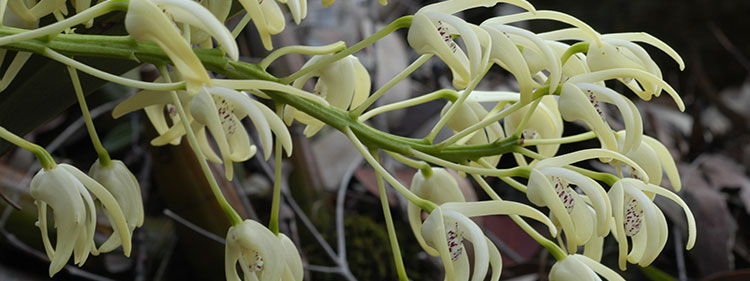
Defying the look of a typical orchid, the Sydney Rock Orchid is particularly impressive in its abundant flowering. Growing easily in tropical and temperate climates. This flower usually blooms during the spring and establishes large territories on either tree trunks or rocks. Although commonly called the ‘Sydney’ Rock Orchid, it occurs all along the east coast of the country. It has many subspecies that vary in colour, habitat, and size.
Grass Trigger Plant (Stylidium graminifolium)
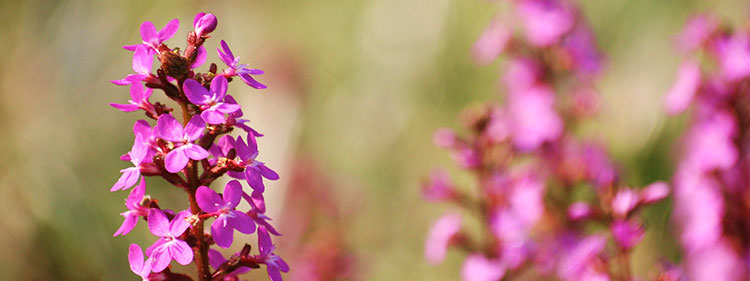
An innocuous-looking plant with a cool trick up its sleeve. The Grass Trigger Plant is not exactly what it may seem at first sight. With small delicate pink flowers that grow along the main stem. Its name comes from its rather aggressive pollination method. Whereby it literally whacks investigating insects over their backs with pollen. When insects land on the flowers. Their weight and movement trigger a sensitive club-shaped floral column that stamps pollen on them. The insects later transfer to another Grass Trigger Plant flower. Once released, the trigger takes about 20 minutes to reset.
Featherflowers (Verticordia)
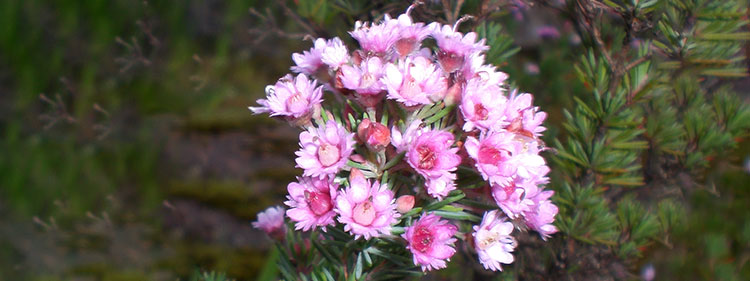
As diverse as they are beautiful, Featherflowers occur in practically every shape, size, and colour – except for the elusive blue. One thing they all have in common though is that their flowers have a feathery texture, hence the common name. They are endemic to the country and occur mostly in the southwest of Western Australia. As well as in some parts of the Northern Territory. Featherflowers gained an unfortunate reputation in the 1970s of being difficult to grow and care for as garden plants. Today their needs are much better understood today and their maintenance is really quite simple. They make excellent cut flowers and have a long vase life. Two of the spectacular standouts of the species are the Verticordia oculata and Verticordia dichroma.
Coppercups (Pileanthus)
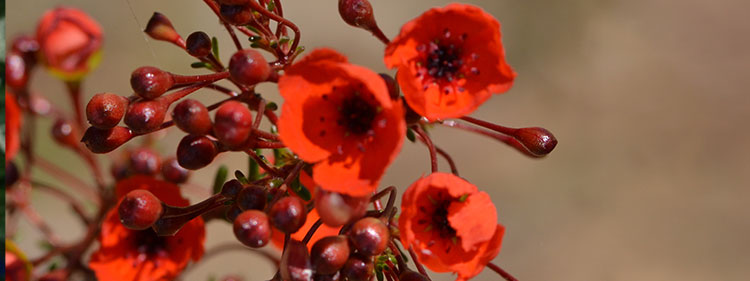
Easily identifiable by their bright orange flowers. Coppercups are found only in the remote wide, open landscapes of Western Australia where they prefer sandy soil. The common name of these native Australian flowers come from the colour and shape of the flower. While the botanical name is in reference to the leaf-like structure. This covers the new flower buds and that eventually falls off when the flower opens. The Greek word ‘pilos’ means ‘cap’ in English and ‘anthos’ translates to flower. Flowering during the summer, Coppercups grow to an average height of 1 metre and they make excellent garden plants.
Native Violet (Viola banksii)
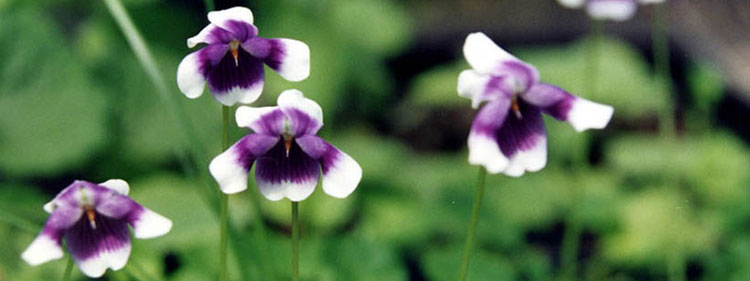
Once considered the same species as Viola hederacea. Upon closer examination, the Viola banksii was observed to have smaller, but more vividly coloured flowers. Both plants, however, are very easy to grow and maintain. Mostly found on the east coast of the country. The Viola banksii’s large leaves are striking in their size and deep green colour. They almost overshadow the flowers in terms of appeal. Native Violets grow to about 15 cm high and work beautifully as ground cover.
Coastal Jugflower (Adenanthos cuneatus)
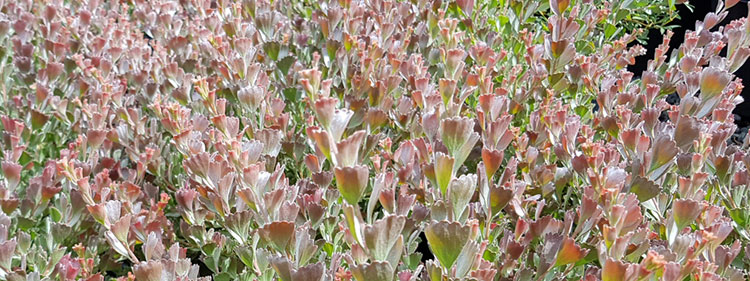
It may not produce a big display of flowers like those of other plants on this list. However the real showpiece of the Coastal Jugflower is its ornamental foliage. Preferring the sandy soil and coastal dunes of Western Australia, its new leaf growth takes on a spectacular red-pink colour. It gives the plant a great pop of colour for several weeks during the summer. Its also an evergreen, meaning its natural green-silvery leaves thrive all year round. Occasionally low-growing, but sometimes reaching heights of 2 metres. The Coastal Jugflower is a resprouter and is therefore able to survive and flourish once more after bushfires.
Coral Bush (Templetonia retusa)
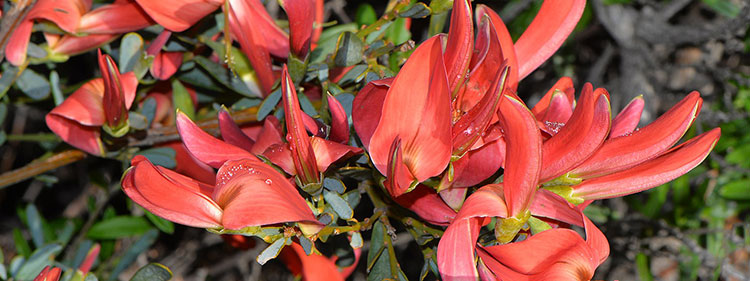
Instantly eye-catching with its ravishing red flowers. The coral bush is found on the coastal cliffs and hillsides of Western Australia and South Australia. Also known as Cocky’s Tongues, due to the colour and shape of its flowers that grow with an upward curvature. It blooms mostly in spring, but sometimes even earlier in winter. Considered to be a very ornamental plant. It grows up to 2 metres and is very suitable as a hedge or fence.
Sturt’s Desert Pea (Swainsona formosa)
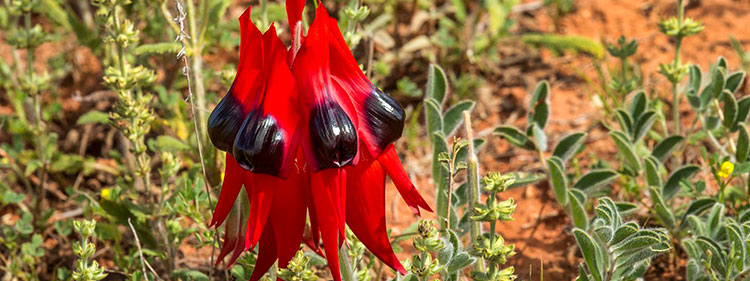
With probably the longest list of alternative common names recorded. Numbering 17 at last count. The Sturt’s Desert Pea has been fascinating botanists for almost 200 years. Found exclusively in Australia, it was adopted as South Australia’s official flower emblem in 1961. Its unusual, almost alien-like appearance, has made it one of the country’s most well-known and easily-recognised native flowers. Although the red-flowering one is the most common. There are also natural versions that produce white flowers and others pink flowers. Sturt’s Desert Pea blooms after heavy rain. Mostly during the winter and parts of spring, and it prefers red sandy soil and desert conditions.
Christmas Bells (Blandfordia grandiflora)
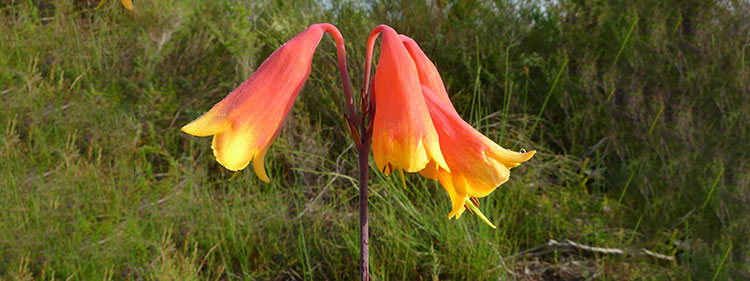
A beautifully fragile flower with a very unique display, the Blandfordia grandiflora certainly has a flair for the dramatic. It balances its entire weight on a wispy thin main stem about 175 cm tall. It produces several branched stalks that bear a single flower each. The number of flowers per plant ranges from two to twenty and they are usually red with yellow tips. However there are some that are fully yellow. Preferring wetland most conditions. Christmas Bells are native Australian flowers that bloom on the coasts of Sydney and Brisbane around Christmas time, hence its common name.
Golden Wattle (Acacia pycnantha)
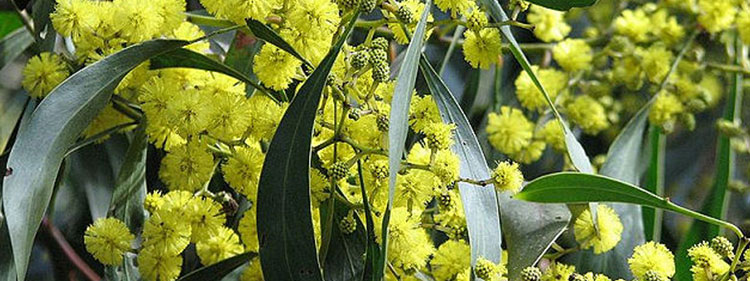
It is perhaps fitting to end this list with a plant that in many ways embodies the spirit of Australia. The Golden Wattle is a bright, sunny plant with vibrant yellow blooms and green foliage. These combine to create a lovely display of the national colours. Furthermore, it is very resilient, able to withstand droughts and bushfires, and other tough conditions. It is no coincidence that it was officially named the national flower of Australia in 1988 by the then Governor-General. There is even a National Wattle Day, which is on 1st September. You can celebrate it this year by planting wattles.
Conclusion
Australia is a treasure trove of native flowers. Its unique geography, climate, and ecology mean that it is home to some of the world’s most fascinating and stunning flowers. Some that cannot be found anywhere else on earth. To own a piece of native Australiana in your home, check out our range of Australian native flowers at Flowers Across Sydney. With same-day delivery and the option to tailor your bouquet according to your preferences, you will find the perfect arrangement for you and your loved ones.

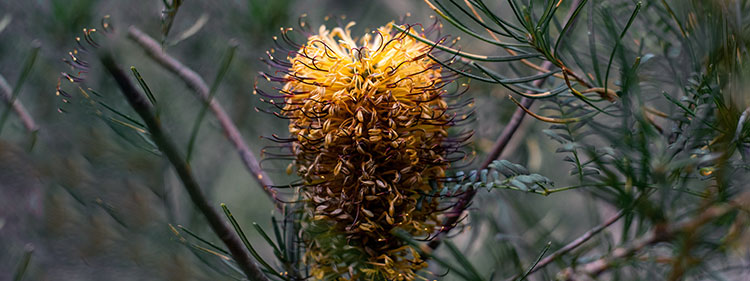

No Comments